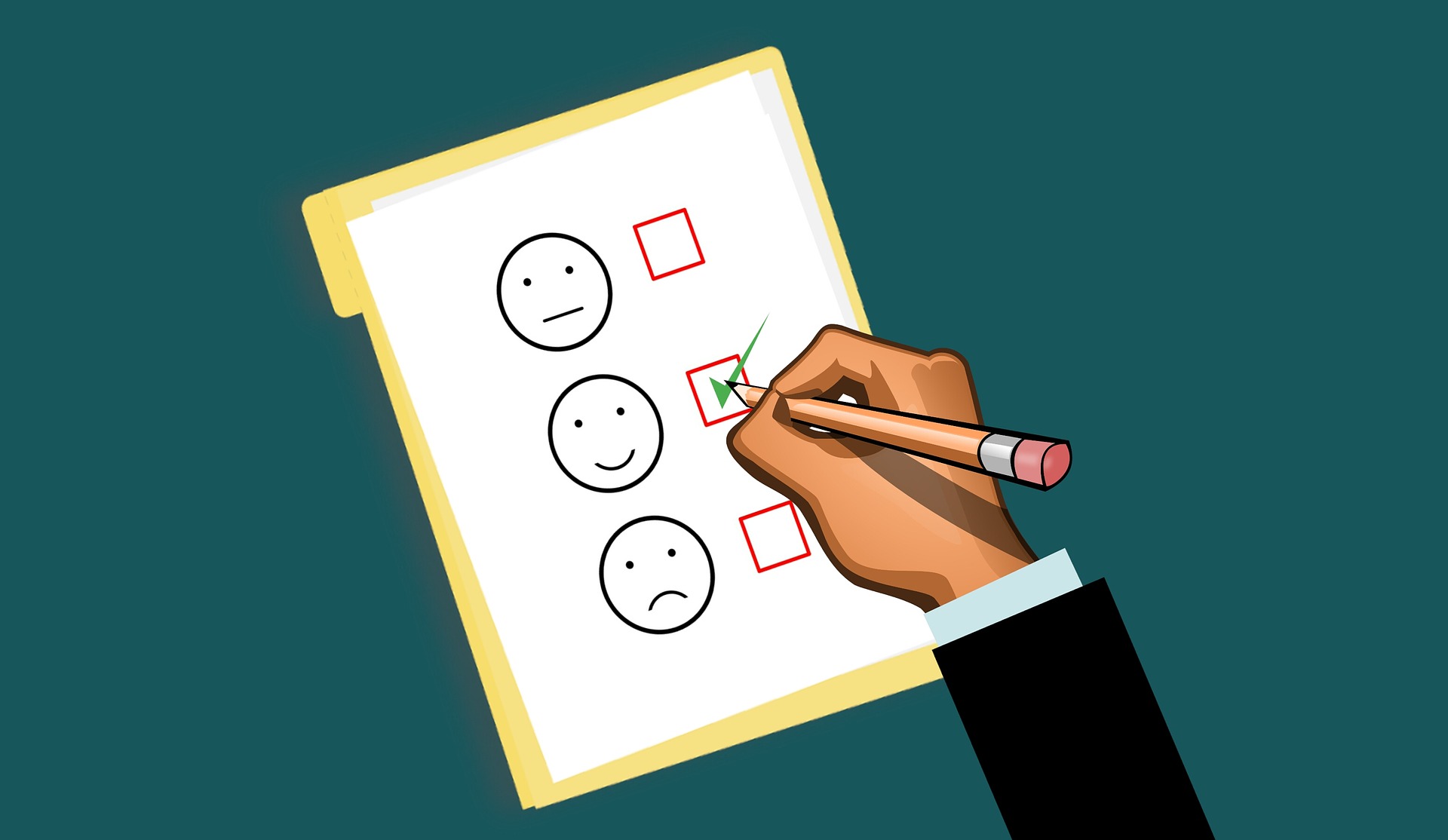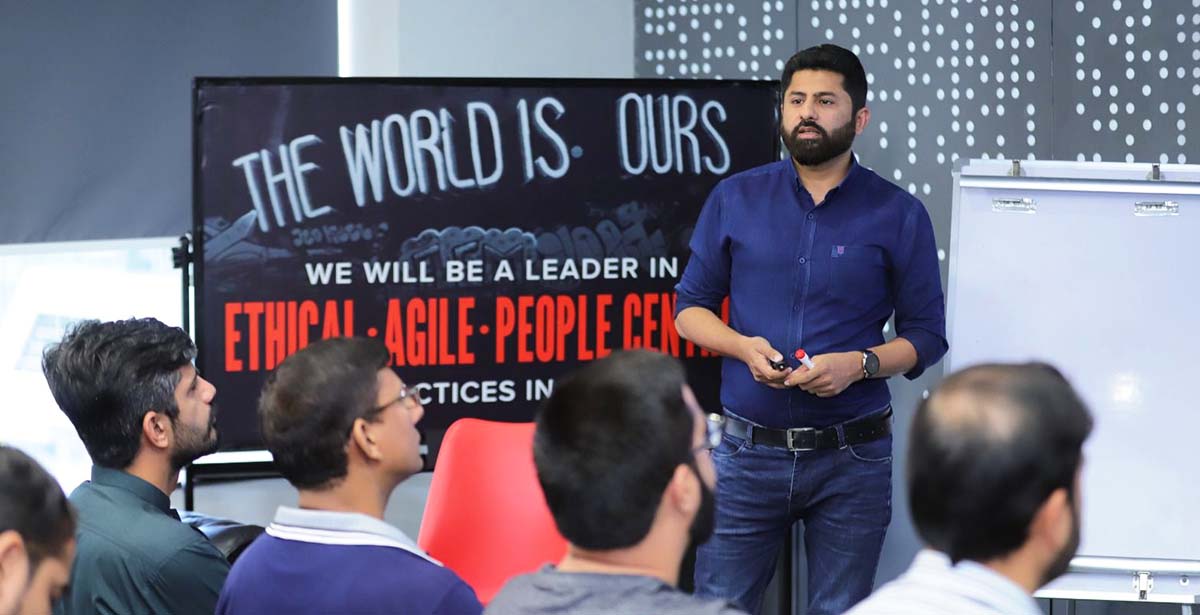Employee Happiness Matters and Here Is How You Can Measure It!

Clients do not come first. Employees come first. If you take care of your employees, they will take care of the clients.
Richard Branson
Having happy staff isn’t a perk, it is a requirement for every successful business. It affects productivity, motivation, devotion, and retention.
Workplace happiness expert, Kylie Hunt, has illustrated a model of how workplace happiness is related to and is improved by productivity and creativity. Her statistical analysis revealed:
- Happy people are 31% more productive and three times more creative than others.
- Happiness improves business profitability by 147%.
- 75% of individuals leave jobs because they are unhappy with the boss rather than the job.
- Lost productivity among workers costs around $1 trillion globally.
- Unhappiness in the workplace is the result of a lack of intrinsic motivation and failure to cope with stress.
What’s more, the Journal of Labor Economics reports that happier people are about 12% more productive. This result is based on four different experiments at an elite British university.
In 2011, ScrumInc used the happiness metric to increase the velocity of their teams by 500% which doubled their net revenue. The way to do this is now part of a formal pattern at ScrumPlop.org called “Scrumming the Scrum.”
Companies around the globe have been investing in the happiness and well-being of their employees.
A poll of 437 UK employers, conducted by Willis Towers Watson, found that 75% of employers plan to incorporate wellbeing into their benefits strategies, with special emphasis on financial and social wellbeing.
How Happy Employees Are More Productive
Living in this day and age where Agile work culture has been proved highly productive, employee happiness takes the centerstage. Stated below are the most significant factors that render happy employees more productive:
Increased Degree of Involvement
Happy employees are more engaged at work. Highly engaged individuals take more responsibility for their development because they are passionate about excelling at what they do.
As a result, they bring more energy, enthusiasm, and inventiveness to their employment due to their high levels of involvement.
Higher Quality Work
Happier employees are more likely to be physically and psychologically fit, which means they are more likely to bring their best to work and take fewer sick days. They have better mental clarity and energy, enabling them to work more effectively and come up with innovative solutions to challenges.
Improved Interpersonal Skills
Clients, coworkers, and supervisors all enjoy interacting with happy employees because they give better customer service and are more enjoyable to connect with. They are more effective team members who listen and interact well with others because of their interpersonal skills.
Employees with a positive view are more inclined to receive feedback because they believe they can grow by using constructive criticism.
Loyalty
Satisfied employees are more relaxed and tend to work with the company for the long term. Reduced turnover means less time and money spent on hiring and training new staff and fewer interruptions or productivity slowdowns while onboarding.
Additionally, satisfied employees are more likely to report to work and perform tasks with greater effort. They go far above and beyond the call of duty and work those valuable overtime hours.
Willingness to Take Risks
Innovation is a company’s soul, and only happy people are inspired to come up with new ideas and provide innovative solutions.
Happy employees take more risks compared to employees who are not satisfied with their jobs. Business is not about playing it safe; it’s about seizing opportunities at the right moment and engaged employees are more likely to detect and act on opportunities in the market and within your company.
How Can Employee Happiness Be Measured?
Happiness is reflected in people’s behavior and action. But if an organization wants to quantify it, there are different techniques available:
Happiness Index

Crisp, a consulting firm based in Stockholm, came up with an inspiring metric called the “Crisp Happiness Index.” To assess the Happiness index, they regularly ask employees a few questions about their happiness. This allows them to track satisfaction over time and identify trends and events that impact the team’s happiness.
The question set includes one rating question and some qualitative, open-ended, free-text questions to elicit improved suggestions and options like the following:
- How happy are you with your team/company?
- How happy are you with your tasks?
- How happy are you with your current client or project?
- What feels best right now?
- What feels worst right now?
- What would increase your happiness?
Employees can rate the question on a scale of 1–5. At Crisp, they decided to keep it voluntarily for everyone at the company. They did not force anyone to fill the survey and kept it open so that anyone can fill it at any time. However, some of the team members used to seed data in the form from time to time so that others get motivated to fill it.
Our Experience with the Happiness Index
DPL always puts its employees first so we decided to create our own Happiness Index. We created a survey by choosing the questions for our Happiness Index and floated them within teams across the company. After data collection, scrum masters analyzed and categorized it into different categories e.g issues that can be solved within the team and issues that need to be brought to the leadership, etc.
Being an Agile company providing IT services, DPL firmly believes in self-organizing and self-managing teams so we created a committee of Scrum Masters for this activity. The committee decided to repeat this activity once every quarter. As a result of these surveys, we have received a lot of important suggestions and feedback which we used to take corrective measures. After successful implementation of the Happiness Index within DPL, the Average Employee Happiness Score at DPL increased by 4% between two quarters.
Important Considerations During Implementation
- You must decide if you want to make the survey anonymous or not. Teams with high-trust culture can keep it open but teams with low-trust culture should keep it anonymous so that the employees share honest feedback without reservation.
- You must carefully select the questions so that relevant and actionable data is collected. You can use a different set of questions for different surveys/situations.
- Frequency is very critical. If the frequency is too narrow, it will lose its significance, and employees will not take it seriously.
- It is very important for you to prepare and present what you have improved/achieved as a result of the previous survey. This will give employees a sense of trust and they will fill the next survey openly and happily.
Sprint Retrospective Happiness Metrics
Sprint retrospectives are an important part of a team’s journey towards growth and continuous improvement. Scrum Masters can design a happiness metric retrospective, or they can make the happiness check a permanent part of the team’s retrospective. After this, the Scrum Master facilitates a team discussion on what the team could do, during the next sprint that might increase the team’s happiness.
I used Team Health Metric for one of my retrospectives, and we can use the happiness metric in the same way. Details can be viewed at: https://www.linkedin.com/pulse/innovative-sprint-retrospective-distributed-teams-sharif-psm-1/
Other Tools to Measure Employee Happiness
Few other tools/techniques through which you can measure employee’s happiness are listed below.
- Oxford Happiness Questionnaire – This questionnaire was created by Oxford University psychologists Michael Argyle and Peter Hills. This is an excellent method to get a sense of how happy your teams are.
- Happiness Door – The Happiness Door is a visible space where participants of meetings, workshops, or events give continuous feedback in three categories: things that make attendees happy, things they feel neutral about, and things they didn’t like. It is either an empty flipchart or a collection of post-its.
- Happyforce – Happyforce turns employee engagement and feedback into actionable insights to increase motivation, reduce stress, and elevate your corporate culture.
- Niko-Niko Calendar – A calendar installed on one of the room’s walls. The format of the calendar allows each team member to record, at the end of every workday, a graphic evaluation of their mood during that day. This can be either a hand-drawn “emoticon,” or a colored sticker, following a simple color code, for instance: blue for a bad day, red for neutral, yellow for a good day. Over time, the Niko-Niko calendar reveals patterns of change in the moods of the team, or of individual members.
- Team Dynamics Analytic – This analysis will discuss conflict management in teams, including the benefits of and strategies for managing conflict in a successful manner.
Investing within the happiness of your team won’t only improve morale, focus, and productivity – it’ll assist you in building a more stable, and more rewarding business.
Let’s keep this conversation going! What’s your take on employee happiness and well-being? How are you doing it at your workplace?




